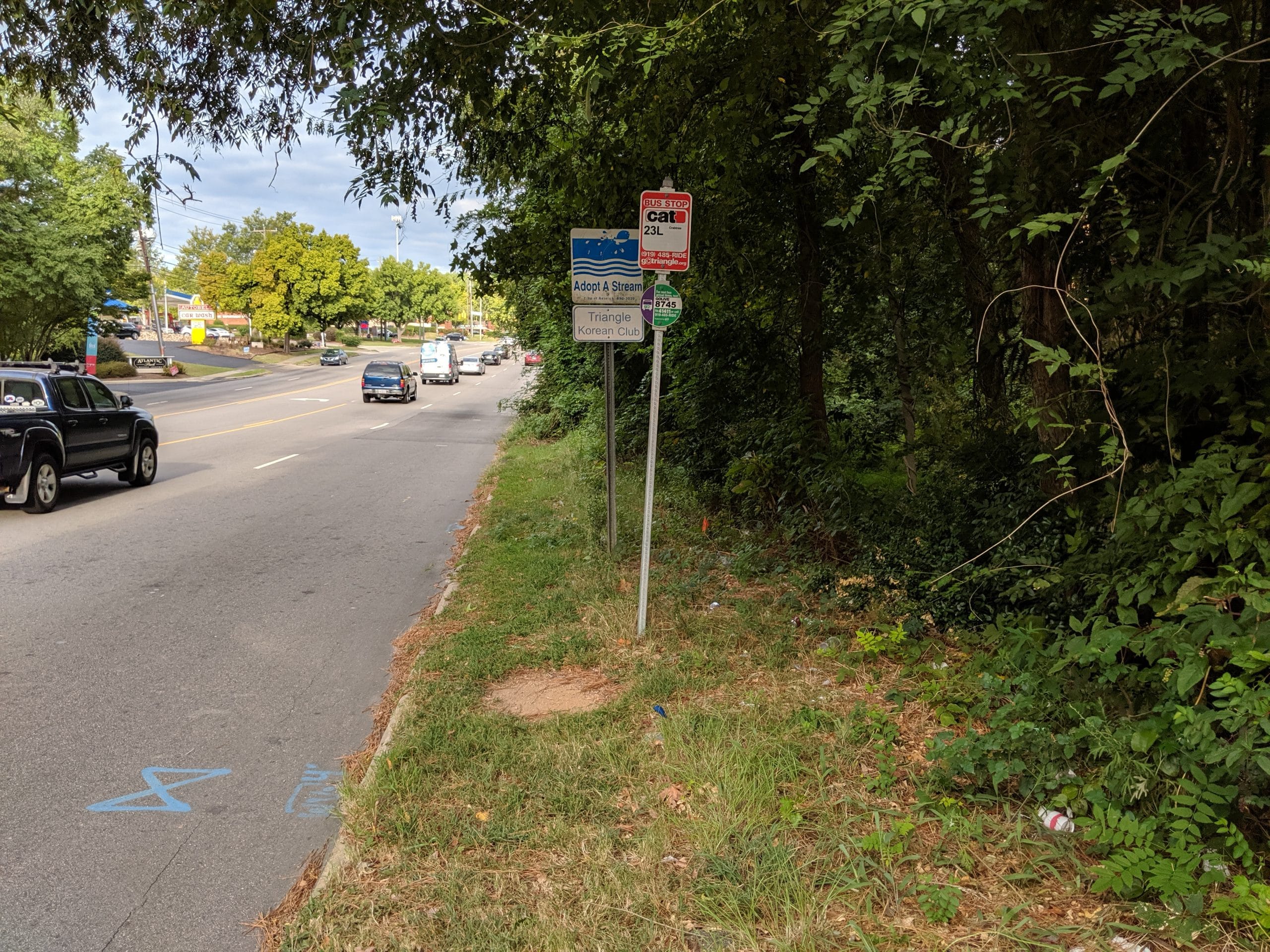Brian Burnett, native of Southeast Raleigh and owner of Glenwood South Tailors & Men’s Clothing once shared “my grandmother and I would ride the City Kitty around town growing up. Routes were set up to take women like her to nanny and maid positions in white neighborhoods.” The story of Raleigh’s transit system, much like the rest of the nation’s history with ‘Urban Renewal,’ is plagued by underfunding and racism.
The transit system in Raleigh was owned and operated by a company with profit in mind until the city took it over in the 70’s and the American’s with Disabilities Act (ADA) was still 20+ years away. In the 1980’s many white families moved from cities to live in suburbs, leaving a transit system that served a largely African-American population. Bus stops were being utilized by Black women going to in-home jobs in those same suburbs. The city didn’t feel much incentive to provide bus stops with access and seating.
So it did not surprise us when we read the April 14, 2021 article in the News & Observer, where it was reported that of GoRaleigh’s over 1400 bus stops, more than one thousand of them do not have shelters or benches. The article documents 82-year old Ms. Lenora Sutherland daily experience sitting on a bucket she brought from home while waiting for her bus. The article ends with her noting that if there were more places to sit at bus stops, more people would probably use the system.
Ms. Sutherland is absolutely correct that seats are needed at bus stops throughout the region and that without them, would-be riders are finding other options. The truth is, like many things in our infrastructure network, the original thinking behind these stops was baked with racism and a lack of concern about mobility needs.
According to numbers maintained by the City of Raleigh, only about 24% of bus stops throughout the city are equipped with benches. Most of these stops are located on main thoroughfares and in more populated areas, such as in downtown Raleigh and around NC State University and cover about 70% of riders.

There are over a thousand bus stops in Raleigh without covered shelters or benches. Many of these stops are in the front yards of our neighbors, sometimes accompanied by sign posts still bearing the name “Capital Area Transit.” Residents who frequent these stops are familiar with how rare it is to have a sidewalk at the stop.
Over the last few years, Wake County, through the Wake Transit Plan, has spent millions of dollars to repair and expand our transit system, which for too long found it acceptable for residents to spend three hours to travel only a few miles. It’s similarly unacceptable that anyone should have to wait in the rain or under the hot sun to get to a doctor’s appointment or job interview. The City of Raleigh has a strong ADA compliance policy that means that anything built or updated must be brought up to a measure where persons with mobility issues may be able to use it. And we are finally, as a society, recognizing that many of our past policies around housing, transportation, and land use were based upon systematically racist assumptions, which have had a long-term negative impact on minority communities.
We, as a region, absolutely need to get serious about how our neighbors and fellow residents are getting around. We have to invest in creating safe and comfortable bus stops and increase bus service, so riders don’t have to wait as long for their next bus.
Our bus stops can’t just be benches in the mud, even if that were a legal option. They need continuous sidewalks that connect to crosswalks. They need lighting that makes transit users feel safe and welcomed. Benches, shelters, trash cans, displays to tell folks when the next bus will arrive, and charging ports for electronic devices. These so-called “amenities” should be standard for all locations, not just new stops. We cannot compromise on how we treat riders. Our riders are all too familiar with being promised solutions that never come to pass.
We encourage those who are concerned about the state of transit in Wake County to take a moment and find the stop nearest to your home. If it is on your street, then you should advocate for sidewalks to be installed in your front yard along with better drainage and curbs. We also encourage you to get to know the members of your community who frequently use the bus stops in your neighborhood. Ask yourself what you can do to help make sure they have access to the things they need, like benches, bus shelters, or even just water on a hot day? Hear their concerns and needs and help them be heard by elected officials and planners.
Lastly, when opportunities come along for our local governments to invest more in transit, provide your support. Even though it might mean more money coming out of your pocket to help pay for it. Investing in transit comes back to the local economy five fold and helps to reduce long-standing socioeconomic inequities.


